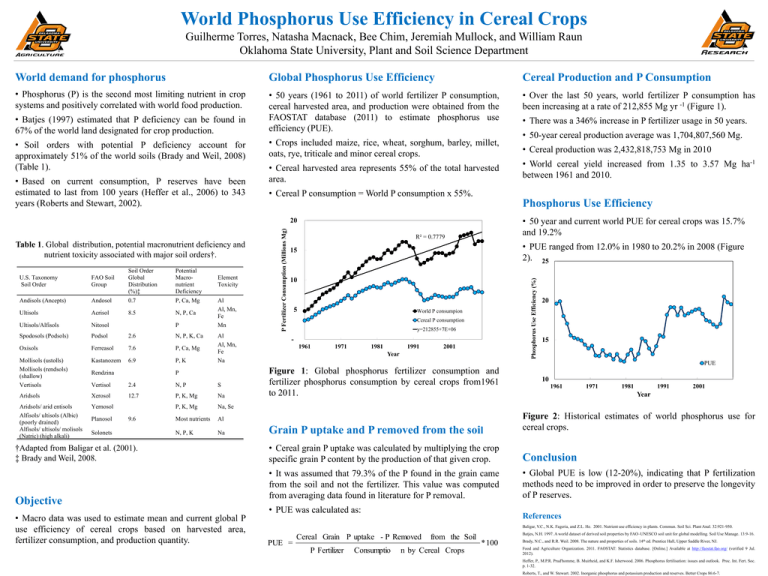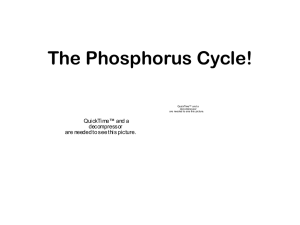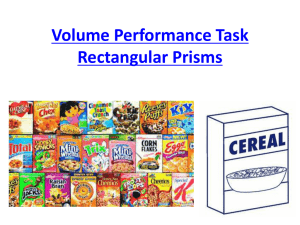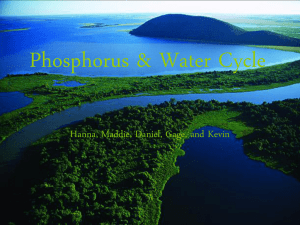
World Phosphorus Use Efficiency in Cereal Crops
Guilherme Torres, Natasha Macnack, Bee Chim, Jeremiah Mullock, and William Raun
Oklahoma State University, Plant and Soil Science Department
World demand for phosphorus
Global Phosphorus Use Efficiency
Cereal Production and P Consumption
• Phosphorus (P) is the second most limiting nutrient in crop
systems and positively correlated with world food production.
• 50 years (1961 to 2011) of world fertilizer P consumption,
cereal harvested area, and production were obtained from the
FAOSTAT database (2011) to estimate phosphorus use
efficiency (PUE).
• Over the last 50 years, world fertilizer P consumption has
-1
been increasing at a rate of 212,855 Mg yr (Figure 1).
• Batjes (1997) estimated that P deficiency can be found in
67% of the world land designated for crop production.
• Soil orders with potential P deficiency account for
approximately 51% of the world soils (Brady and Weil, 2008)
(Table 1).
• Based on current consumption, P reserves have been
estimated to last from 100 years (Heffer et al., 2006) to 343
years (Roberts and Stewart, 2002).
• Crops included maize, rice, wheat, sorghum, barley, millet,
oats, rye, triticale and minor cereal crops.
• Cereal harvested area represents 55% of the total harvested
area.
Andisols (Ancepts)
Andosol
0.7
Ultisols
Acrisol
8.5
P, Ca, Mg
N, P, Ca
Ultisols/Alfisols
Nitosol
P
Spodosols (Podsols)
Podsol
2.6
N, P, K, Ca
Oxisols
Ferreasol
7.6
P, Ca, Mg
6.9
Al
Al, Mn,
Fe
Mn
Al
Al, Mn,
Fe
Na
Mollisols (ustolls)
Mollisols (rendsols)
(shallow)
Vertisols
Kastanozem
Vertisol
2.4
N, P
S
Aridsols
Xerosol
12.7
P, K, Mg
Na
Aridsols/ arid entisols
Alfisols/ ultisols (Albic)
(poorly drained)
Alfisols/ ultisols/ molisols
(Natric) (high alkali)
Yernosol
P, K, Mg
Na, Se
Most nutrients
Al
N, P, K
Na
Rendzina
Planosol
P, K
Element
Toxicity
P
9.6
Solonets
†Adapted from Baligar et al. (2001).
‡ Brady and Weil, 2008.
Objective
• Macro data was used to estimate mean and current global P
use efficiency of cereal crops based on harvested area,
fertilizer consumption, and production quantity.
• World cereal yield increased from 1.35 to 3.57 Mg ha-1
between 1961 and 2010.
• 50 year and current world PUE for cereal crops was 15.7%
and 19.2%
R² = 0.7779
• PUE ranged from 12.0% in 1980 to 20.2% in 2008 (Figure
2). 25
15
10
5
Phosphorus Use Efficiency (%)
FAO Soil
Group
Potential
Macronutrient
Deficiency
• Cereal production was 2,432,818,753 Mg in 2010
Phosphorus Use Efficiency
P Fertilizer Consumption (Millions Mg)
U.S. Taxonomy
Soil Order
Soil Order
Global
Distribution
(%)‡
• 50-year cereal production average was 1,704,807,560 Mg.
• Cereal P consumption = World P consumption x 55%.
20
Table 1. Global distribution, potential macronutrient deficiency and
nutrient toxicity associated with major soil orders†.
• There was a 346% increase in P fertilizer usage in 50 years.
World P consumpion
Cereal P consumption
y=212855+7E+06
1961
1971
1981
1991
2001
Year
20
15
PUE
Figure 1: Global phosphorus fertilizer consumption and
fertilizer phosphorus consumption by cereal crops from1961
to 2011.
10
1961
1971
1981
1991
2001
Year
Grain P uptake and P removed from the soil
Figure 2: Historical estimates of world phosphorus use for
cereal crops.
• Cereal grain P uptake was calculated by multiplying the crop
specific grain P content by the production of that given crop.
Conclusion
• It was assumed that 79.3% of the P found in the grain came
from the soil and not the fertilizer. This value was computed
from averaging data found in literature for P removal.
• Global PUE is low (12-20%), indicating that P fertilization
methods need to be improved in order to preserve the longevity
of P reserves.
• PUE was calculated as:
References
Baligar, V.C., N.K. Fageria, and Z.L. He. 2001. Nutrient use efficiency in plants. Commun. Soil Sci. Plant Anal. 32:921-950.
PUE =
Cereal Grain P uptake - P Removed
P Fertilizer
Consumptio
from the Soil
n by Cereal Crops
Batjes, N.H. 1997. A world dataset of derived soil properties by FAO–UNESCO soil unit for global modelling. Soil Use Manage. 13:9-16.
* 100
Brady, N.C., and R.R. Weil. 2008. The nature and properties of soils. 14th ed. Prentice Hall, Upper Saddle River, NJ.
Food and Agriculture Organization. 2011. FAOSTAT: Statistics database. [Online.] Available at http://faostat.fao.org/ (verified 9 Jul.
2012).
Heffer, P., M.P.R. Prud'homme, B. Muirheid, and K.F. Isherwood. 2006. Phosphorus fertilisation: issues and outlook. Proc. Int. Fert. Soc.
p. 1-32.
Roberts, T., and W. Stewart. 2002. Inorganic phosphorus and potassium production and reserves. Better Crops 86:6-7.










